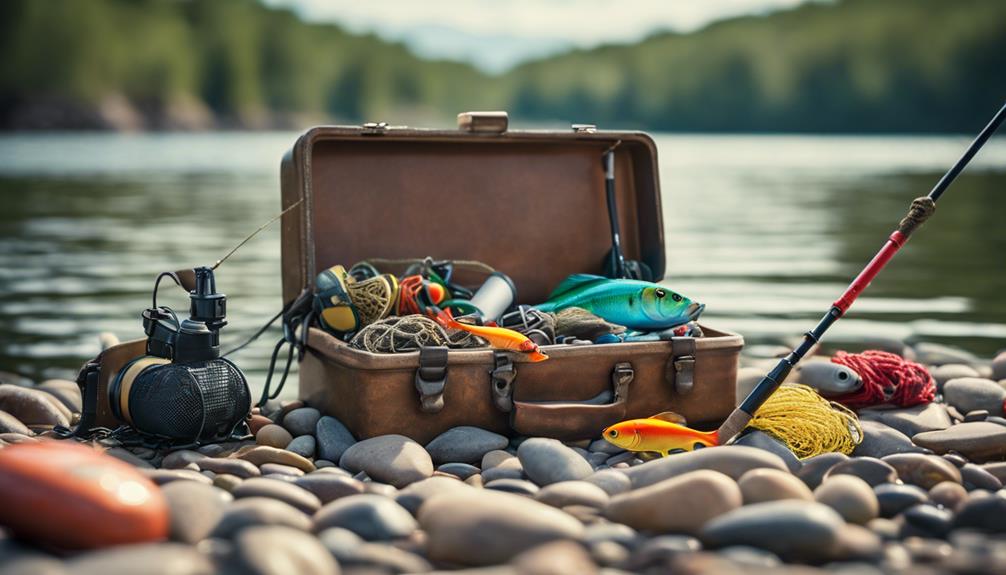Understanding the Basics of Bass Fishing Flies
Bass fishing is an exhilarating sport that requires not only skill but also the right equipment. One of the most critical components of successful bass fishing is choosing the right flies. Flies for bass fishing come in various types, each designed to mimic the natural prey of bass, such as insects, baitfish, and crustaceans. When selecting flies, it is essential to understand the different styles available, including streamers, poppers, and nymphs. Each of these flies serves a unique purpose and can be effective in different fishing conditions. By familiarizing yourself with the various types of flies for bass fishing, you can significantly increase your chances of landing a big catch.
Types of Flies for Bass Fishing: A Closer Look
There are several types of flies that anglers commonly use when targeting bass. Streamers are an excellent option for imitating baitfish and are effective when fished with a fast retrieve. They can be large or small, depending on the size of the baitfish in the water. Poppers, on the other hand, create a surface disturbance, attracting bass with their enticing splashes and bubbles. These flies are often used during early morning or late evening when bass are feeding near the surface. Lastly, nymphs mimic the underwater life stage of insects and can be effective in deeper waters. By understanding the specific roles these flies play, anglers can choose the right fly for their bass fishing adventures.
Choosing the Right Fly Color for Bass Fishing
Color plays a crucial role in the effectiveness of flies for bass fishing. Bass are known for their aggressive feeding behavior, and the right color can trigger their predatory instincts. Bright colors like chartreuse and pink are often effective in murky waters, where visibility is limited. Conversely, natural colors such as brown, green, and black tend to work well in clear water, as they closely mimic the appearance of baitfish and insects. Additionally, the time of day and weather conditions can influence color choice. For instance, bright sunny days may call for more subdued colors, while overcast days might require brighter options. By experimenting with different colors, anglers can discover which works best for their specific fishing environment.
Seasonal Considerations When Selecting Flies for Bass Fishing
The season can significantly impact the type of flies you should use for bass fishing. In the spring, as the water warms and bass begin to spawn, using larger, more aggressive flies can be productive. Streamers that mimic larger baitfish can provoke strikes from hungry bass. Summer brings warmer temperatures and increased insect activity, making dry flies and poppers highly effective during this time. As the water cools in the fall, bass become more aggressive in their feeding habits, making it an excellent time to use streamers once again. Winter fishing can be challenging, but using slow-moving nymphs and streamers can still yield results. By adapting your fly selection to the seasons, you can enhance your bass fishing success.
Matching the Hatch: A Key Strategy for Bass Fishing Flies
One of the most effective strategies in bass fishing is “matching the hatch,” which means using flies that imitate the insects currently available in the water. Observing what bass are feeding on can significantly improve your chances of a successful catch. This may involve looking at the surface to identify flying insects or checking the water for any visible baitfish. Once you determine what the bass are feeding on, you can select flies that closely resemble these prey items in size, shape, and color. This technique requires patience and keen observation but can lead to more consistent bass catches.
Techniques for Fishing with Flies for Bass
When it comes to fishing with flies for bass, the technique you use can make a world of difference. One popular method is the “strip and pause” technique, where you retrieve the fly with short, quick strips followed by brief pauses. This mimics the erratic movement of injured baitfish, which is often irresistible to bass. Additionally, varying your retrieve speed can also entice strikes, as bass may be more willing to chase a fly that appears to be fleeing. For poppers, a steady chugging retrieve can create an enticing surface disturbance. Experimenting with different techniques will help you find the most effective method for your specific fishing conditions.
Essential Gear for Fly Fishing for Bass
While flies are critical for bass fishing, having the right gear is equally important. A sturdy fly rod with a weight appropriate for the flies you intend to use is essential. A 7 to 9 weight rod is typically ideal for bass fishing, as it provides the necessary backbone to handle larger fish. Pair your rod with a quality fly reel that can handle the weight of your line and has a reliable drag system. Additionally, using a floating line is advantageous for fishing poppers and dry flies, while a sinking line may be necessary for streamers and nymphs. Don’t forget to invest in a good selection of flies and carry a variety of sizes and colors to adapt to changing conditions.
Conclusion: Elevating Your Bass Fishing Experience with the Right Flies
In conclusion, using the right flies for bass fishing can greatly enhance your fishing experience and success rates. By understanding the various types of flies, their colors, seasonal considerations, and techniques, you can become a more proficient angler. Matching the hatch and investing in the right gear will further improve your chances of landing that trophy bass. Whether you’re a seasoned pro or just starting, mastering the art of fly fishing for bass will undoubtedly provide countless hours of enjoyment on the water. So, get your gear ready, select your flies wisely, and prepare for an unforgettable bass fishing adventure!
